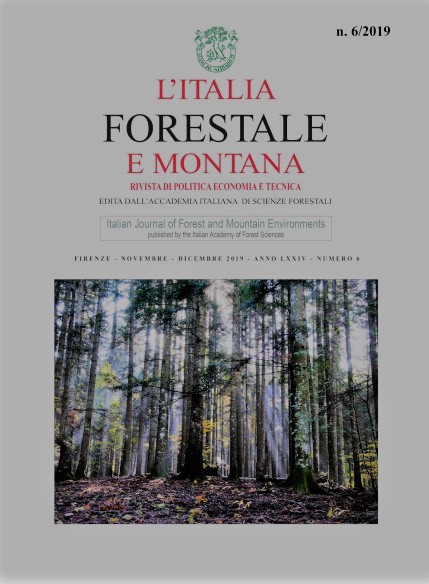Experiences of riparian vegetation management - integration between ecosystem services
Published 2020-01-14
Keywords
- forestry,
- river restoration,
- ecological corridors
Copyright (c) 2020 Italian Journal of Forest and Mountain Environments

This work is licensed under a Creative Commons Attribution-NonCommercial 4.0 International License.
Abstract
Riparian forest provides a relevant ecosystem services such as land protection, conservation of biodiversity and connotation of rural landscape and public fruition. The management should take place considering these particular aspects but it’s essential to avoid that vegetation itself turns into a hazard during floods, without forgetting the economic relevance of timber production in easily, accessible and often fertile areas.
The European projects Interreg Alcotra, “EAU CONCERT I and II - Iniziative di coordinamento degli strumenti di gestione partecipata dell’acqua e azioni di valorizzazione degli eco-sistemi fluviali ”, an Italian and French partnership, introduced a new instrument for the management of vegetation along watercourses: the riparian vegetation management plan (PGV), which combines protection from hydraulic risks, protection of the river ecosystem and promotion of public fruition.
PGVs have been drafted and experimentally applied to 5 Po river tributaries, with different characteristics: (Dora Baltea, Stura in Lanzo, Orba, Dora Riparia and Belbo). Based on the outcomes of the plans, which highlighted hydraulic needs, and biodiversity value, numerous forestry interventions have been designed and implemented for the main riparian and floodplain forest categories, allowing the further improvement of a multifunctional approach.
The riparian poplar and willow groves are relevant from hydraulic risk and biodiversity conservation point of view aims, being the first interface with the stream and a Natura 2000 priority habitats (Habitat Directive). For the management of these pioneer, coetaneous and heliophilous species, subject to strong river dynamics, small-patch clearcutting were done, with an extension ranged from 1500-2000 m2, starting from stand with the larger diameter plants (average 25-35 cm).
For black alder forest, also Natura 2000 habitats (priority), various management practices have been carried out according to the structure and the stage: mixed thinning, coppicing in adult populations and small-patch clearcutting (1,500-3,000 m2).
Cuttings in the riverside oak stand were made both by single tree selection or group selection, with collecting an high percentage of growing stock in the transition stand still rich in large poplars, sometimes declining and at risk of floating.

